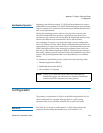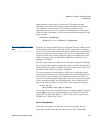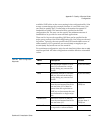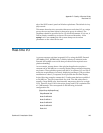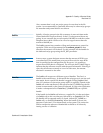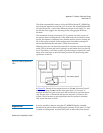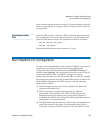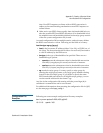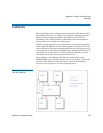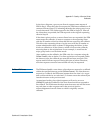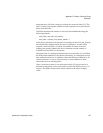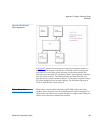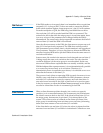
Appendix D Quality of Service Guide
Non-Realtime I/O Configuration
StorNext 3.5 Installation Guide 152
not be counted against the non-real-time I/O. System designers typically
allow for some amount of overage in their I/O subsystem to account for
non-gated files.
Calculating Available
RTIO 4
When the FSM receives a request for RTIO, it takes the amount reserved
into consideration. The reserve amount functions as a soft limit beyond
which the FSM will not traipse. The calculation for
RTIO is as follows:
avail_rtio = rtio_limit - rtio_current
avail_rtio -= rtio_reserve
All internal calculations are done in terms of I/O/sec.
Non-Realtime I/O Configuration
In order to reserve bandwidth for non-realtime I/O (RVIO) operations on
certain clients, you must specify the amount in the QOS central
configuration file. This file is located under $CVFSROOT/config/ (for
example, /usr/cvfs/config). The configuration file name consists of the file
system name and the suffix _rvio.opt. For example, the central
configuration file name for a file system called fs1 would be fs1_rvio.opt.
The configuration doesn't affect the normal RTIO requests; it affects only
the bandwidth allocation to non-RTIO requests. Note the following
characteristics of RVIO:
1 RTIO has higher priority and is always satisfied first. RVIO uses
whatever bandwidth is left.
2 RVIO reservation is not guaranteed. Instead, it is adjusted
dynamically. When there are new RVIO or RTIO requests, the
bandwidth reserved for clients with previous RVIO requests is
readjusted. Each RVIO client will get the RVIO bandwidth reserved
proportional to its request amount.
3 The RVIO bandwidth allocated for a client is the total bandwidth for
non-RTIO requests on the client. The bandwidth (token) will not
return like a normal non-RTIO client does if it's been idle for a hold



